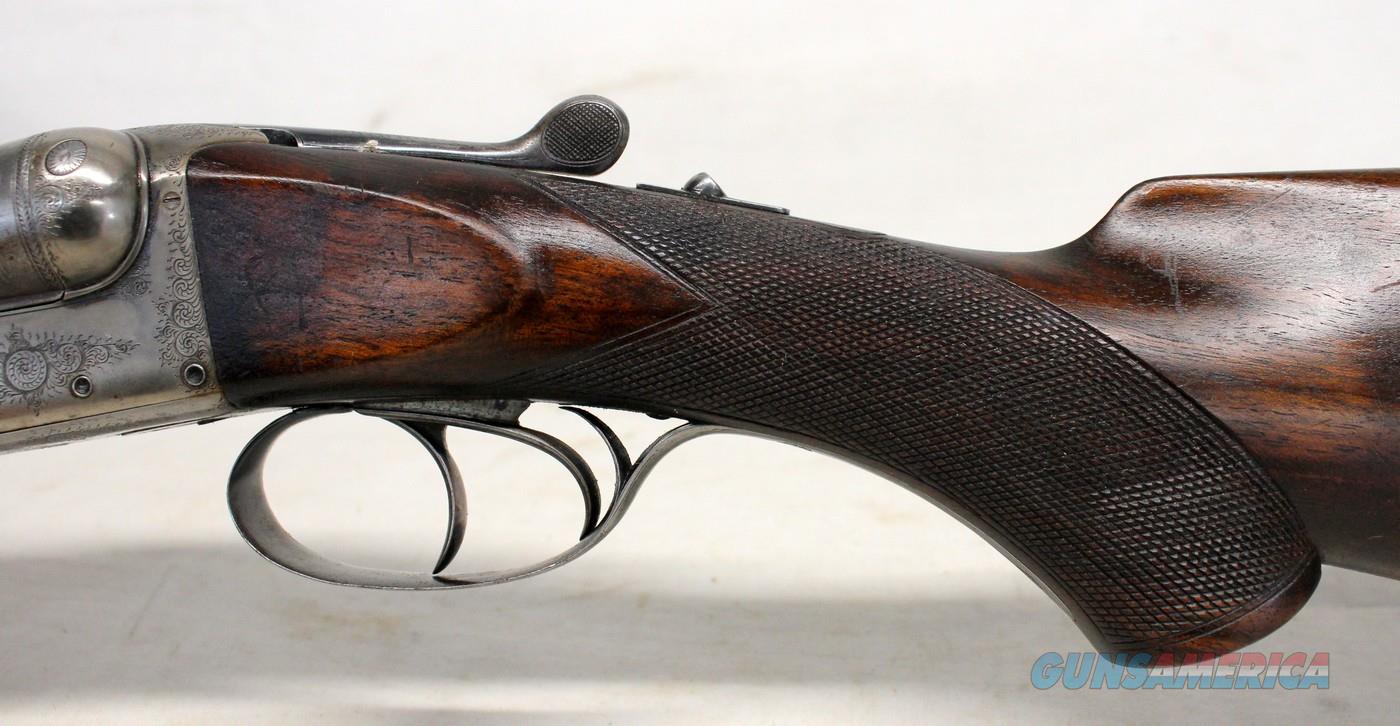

Here's the stampings and marks of the bolt and shroud in case anyone can decipher what action and year it may indicate? I'd love to know if indeed this rifle was made during the middle of WWII or not.

Military actions became sporter actions in 1945 or so while retaining the thumb cutout, then bent bolts were made available, then the true civilian actions came out without the thumb cut somewhere around 1947-1948.

It appears that Belgian Mauser actions changed quite a bit in the years 1940 through 1948 that might give way to an answer from the experts. So absent any actual records from Auguste Francotte the only way to pinpoint the date of manufacture any further is reliant on an area of expertise I do not have.the multitude of marks and stamps on the bolt and receiver.
#Francotte shotgun serial numbers serial number#
I found 2 records of Francotte shotguns that were made in the wartime that are within 70 digits of the rifles serial number that positively dated to 19! (would the Nazis let gunmakers in a seized nation make sporting arms!?) In fact, they did. One Francotte expert I spoke to suggested the gun was made right in the middle of Nazi occupation of Belgium in 1942 which sounded pretty improbable initially. So based on the above, I know the gun was made no later than 1948, but was it made earlier and how much earlier? Proof Mark of a star over a C indicates - Controller of Proof was Brenu Louis who worked from 1924 to 1948. This company manufactured barrels for the trade until 1951. LLH Stamp on the barrel - LLH is the mark used by the company Laurent LOCHET-HABRAN & G brother and sister of Jupille. The gun's proof marks thus far have triangulated the following date ranges: Like any good mystery novel, the answers are deductive albeit still incomplete. The interesting part of the project is I've always wanted to know more about the tradespeople that made this marvel of custom gunsmithing, its provenance, and the actual year of manufacture. Naturally, it has the thumb cutout on the receiver as well. It has a lever release magazine latch externally also. Not unlike many of the British rifles it has a long 27" barrel and ramped front sight. It also has delightfully tuned set triggers, nice wood, and an ebony forend. A bit more on the rifle's configuration: It looks exactly like London Rigby from the odd-ball pseudo quarter rib, the standing and folding sight, barrel band swivel, low comb for iron sights only, and even the large stock belly to accommodate the double stack 4+1 ammo capacity. It was made by them in 416 Rigby and its indeed, a beautiful feeding, smooth as silk gun based on a Mauser large ring action. My Auguste Francotte Mauser is a strange gun. My latest sleuthing brings me to a strange old shooting iron of mine and I thought I'd share what I've learned so far to educate others and to hopefully learn more about the gun in the process. All measurements approximate.Occasionally when I have a few cycles to myself and some insomnia I'll try to get to the bottom of the provenance and history of one of my guns. Measurements: Weight - Barrel: 4 pounds 5.2 ounces, Forearm: 8.0 ounces, Lock and Stock: 3 pounds 3.2 ounces, length of pull - 14 3/8 inches, drop at comb - 2 inches, drop at heel - 2 3/4 inches. Fitted with a fancy walnut checkered pistol grip stock, with light scroll engraving of the hardware of the splinter forearm, scalloped border accent flats on each side of the wrist, black horn grip cap, an unmarked silver inscription panel on the underside of the stock, and an unmarked solid recoil pad. Each side is marked "A.FRANCOTTE MAKER & PATENTEE/LIEGE BELGIUM", with the hand-engraved serial number on the lower tang and a gold inlaid "S" safety position on the upper tang. Over 80% of the frame is covered in fine scroll engraving, with vinework borders, floral pattern screws, and additional scrollwork on the break lever and trigger guard. No cartridge designation, but bore gauges at 30 caliber. The underside bears an assortment of Belgian proofs, including the Liege stamp on each chamber and caliber markings of "7.5*30", with a small amount of scroll engraving on the underside of the lug. Raised ramp bead front sight and 3-leaf express rear sight on a quarter rib, graduated for 50, 100 and 150, with "ABERCROMBIE & FITCH CO./U.S.AGENTS NEW-YORK" on the right and left barrel, respectively. Established in 1810 and put out of business by the German invasion of 1914, the firm of Auguste Francotte produced top-end rifles and shotguns for both the European and American markets.


 0 kommentar(er)
0 kommentar(er)
